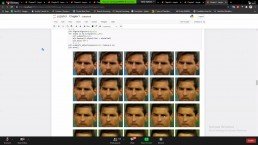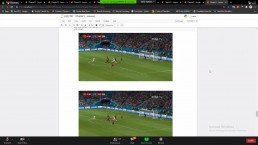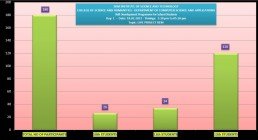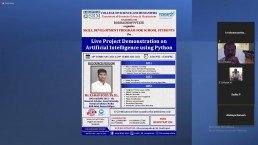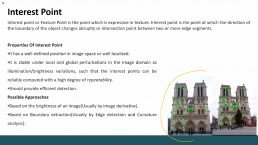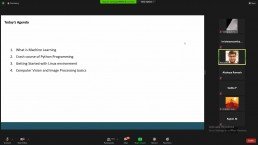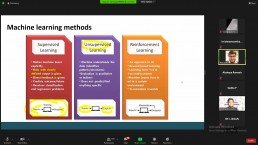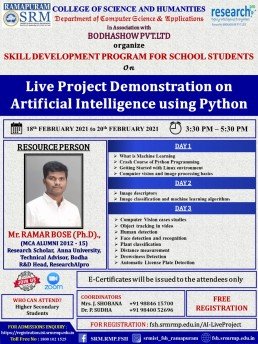
The Department of Computer Science & Applications is organizing three days Skill Development Programme for School Students on
LIVE PROJECT DEMONSTRATION ON ARTIFICIAL INTELLIGENCE USING PYTHON
DATE: 18.02.2021 to 20.2021 | TIME: 3:30 pm to 5:30 pm
Guest Speaker: Mr Ramar Bose-MCA Alumni 2012-15-Research Scholar, Anna University Technical Advisor, Bodha R&D Head, Research Alpro
PARTICIPATION STATISTICS
?TOTAL PARTICIPANTS 180
?10th Std STUDENTS 26
?11th Std STUDENTS 34
?12th Std STUDENTS 120
WELCOME ADDRESS DR.J.DHILIPAN- VICE PRINCIPAL ADMIN & HOD/MCA
===================
DR.J.DHILIPAN- VICE PRINCIPAL ADMIN & HOD/MCA presented the welcome address
During his address he welcomed the chief guest of todays function and for accepting the invitation.
He explained the idea behind the Need for the events which is intended to reduce the gap between School students and academia
He added that AI has been creating greater impacts in more number of domains like Cloud, Machine learning and Deep learning and the future would be based on AI technologies
He concluded his address by stating that the department has taken initiatives to ignite the young sparks to learn new Technologies like AI
TECHNICAL SESSION:*Mr Ramar Bose-MCA Alumni 2012-15-Research Scholar, Anna University
Technical Advisor, Bodha R&D Head, Research Alpro
=======================
Mr Ramar Bose discussed about todays agenda
What is Machine learning?
Crash course on Python Programming
Getting started with Linux environment
Computer Vision and image processing basics
? He added about the following concepts
What is AI? Artificial intelligence is intelligence demonstrated by machines, unlike the natural intelligence displayed by humans and animals, which involves consciousness and emotionality
He then discussed about:
What is ML? Machine learning is the study of computer algorithms that improve automatically through experience. It is seen as a part of artificial intelligence
There are four steps for building a machine learning application.
?Machine learning is a form of artificial intelligence (AI) that teaches computers to think in a similar way to how humans do: learning and improving upon past experiences. It works by exploring data, identifying patterns, and involves minimal human intervention
?The 4 stages of machine learning: From BI to ML
?Stage 1: Collect and prepare data. …
?Stage 2: Make sense of data. …
?Stage 3: Use data to answer questions. …
?Stage 4: Create predictive applications.
MACHINE LEARNING METHODS
?️1. Supervised Learning
?️2. Unsupervised Learning
?️3. Reinforcement Learning
He also explained about
?Machine learning methods
?️ Digital assistant
✅He concluded his address by introducing the following concepts
?Linux environment
?Brief explanation about computer vision.
?The forum was then opened to the students and the queries raised by them were answered by the Guest speaker.
DAY-2 REPROT-19-02-2021
TECHNICAL SESSION:Mr Ramar Bose-MCA Alumni 2012-15-Research Scholar, Anna University- Technical Advisor, Bodha R&D Head, Research Alpro
=======================
️Mr Ramar Bose discussed about todays agenda
️ What is Machine learning?
Image descriptors- image descriptors are descriptions of the visual features of the contents in images, videos, or algorithms or applications that produce such descriptions. They describe elementary characteristics such as the shape, the color, the texture or the motion, among others.
️SIFT
️RANSAC
️SHARED DECRIPTORS
️DENSE DESCRIPTORS
️He then discussed about interest points
☯️He then discussed about Introduction of Python Jupyter
️He continued to explain Hands on image processing with Python
With a suitable example he explained the process of Converting a picture into greyscale format
☯️In addition, he explained the method of Reading, saving and displaying an image with the help of Matplotlib as a hands on session
He discussed about interpolating an image in python
️He also discussed about reading, saving, displaying an image with scikit
?In addition he also explained about the use of scipy in image handling- SciPy contains modules for optimization, linear algebra, integration, interpolation, special functions, FFT, signal and image processing, ODE solvers and other tasks common in science and engineering.
️He also discussed about how to do simple image morphing as hands on
️He concluded his address by explaining about the following
☯️ *Read, save, display using scikit-image*
Using scipy.miscface dataset,misc.face() loads the image
☯️Save the image using save()
Imread() reads the image and print the image.
Converting from one color space to another
?HSV format is used to convert the colour spaces.
?Image manipulator
In this, editing operation done in the image based on the numpy concepts. Binary values are stored in array values.
Croping, editing, resizing are also the operations which can be done.
Swirl transform-Swirl() function is used. Inside the function we have to set the rotation, radius.
[Random_noise() is adds noise to the image
️Upsampling and downsampling
?Upsampling is used to convert the smaller image into larger. It enlarges the sizes of the image.
To resizing the image resize() is used to increase the height and width.
Downsampling is used to convert the large image to small. It rescales the pixels. It shrinks the image and gives the clear pixels compared to the original.
Quantizing-It reduce the noise from the image using the signaltonoise() functions. Inside the function, we have to add the image and mention the axis.
Gradients- It loads the image and makes the filters to reduce and we can look the edges in the frequency. For each image, we can look the frequency of the images how the image filters are reduced.
Simple linear model-Tensorflow will be initiated and data will be loaded. It prints the training set, testing set and validation set.
️To run the tensorflow, we have to start the session and initiates how accuracy the compared photos are.
The session was then opened to the audience for interaction and clarification of their queries.
DAY #3-20-02-2021
TECHNICAL SESSION:*Mr Ramar Bose-MCA Alumni 2012-15-Research Scholar, Anna University
Technical Advisor, Bodha R&D Head, Research Alpro
=======================
❇️Mr Ramar Bose discussed about todays agenda
⚛️Object tracking in video
????Human detection
?Face detection
?Plant classifications
?Distance measurement
?License plat detection
? The guest speaker discussed about Object identification and face detection are probably the most popular applications of computer vision. This technology finds applications in various industries, such as security and social media.
?️ He then discussed about steps in Face Detection in Python with suitable example
Step #1: Install Libraries
Step #2: Detect Faces
Step #3: Gather Data
Step #4: Train
Step#5: Start Recognition
? Additionally, he explained with a Video for detection of faces
?️His lecture continued with Object tracking in video-Video tracking is the process of locating a moving object (or multiple objects) over time using a camera.
?He then explained that we can classify plant images from Python or from the command line with a simple classification library.
????Human detection in video -he discussed about Neural networks trained for object recognition allow one to identify persons in pictures. Hence, we can decompose videos or live streams into frames and analyze each frame by turning it into a matrix of pixel values.
?In continuation, he explained about Tracking unknown people- Pre-trained neural network models to identify persons
?He also demonstrated by means of hands on sessions, some applications like usage of robots, human face detection, surveillance.
✅ He concluded his address by explaining about the following with suitable hands on session
?️Usage of trained data sets for detection
?️Usage of CNN in detection
?️Automatic Attendance system
?️Distance measurement
?️Number plate detection with example
?The session was then opened to the audience for interaction and clarification of their queries.
?Dr P.Sudha-AP/MCA- coordinator of the event proposed the vote of thanks
The event was coordinated by Mrs.J.Shobana/AP-MCA andDr P.Sudha-AP/MCA. Participation certificates were also issued to the students.


